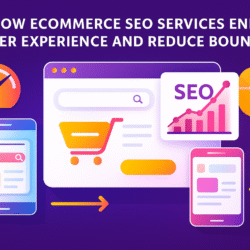The pharmaceutical landscape of the Middle East stands at a historic turning point. Vision 2030 in Saudi Arabia, coupled with parallel diversification strategies across the GCC, has ignited unprecedented investment in healthcare and life sciences. In this transformative moment, CPHI Middle East 2025 arrives—not merely as another trade show, but as the strategic catalyst the region has long awaited. Hosted for the first time in Riyadh from 14–16 October 2025, this flagship global event signals the Kingdom’s readiness to claim its position among the world’s leading pharmaceutical hubs.
Industry leaders already recognize the shift. Decision-makers now book flights and reserve meeting rooms months in advance, understanding that missing this milestone risks falling years behind. The following sections explore precisely why CPHI Middle East 2025 Riyadh will prove to be the decisive game-changer for regional pharmaceutical growth.
Section 1: A Perfect Storm of Policy, Capital, and Ambition
Saudi Arabia no longer talks about becoming a pharmaceutical powerhouse—it actively builds one. The Saudi Food and Drug Authority (SFDA) has streamlined regulatory pathways, reduced approval timelines, and introduced incentives that rival Singapore and Ireland. Simultaneously, the Public Investment Fund (PIF) channels billions into local manufacturing through initiatives such as SUDAIR Pharma City, a 72-square-kilometer ecosystem designed specifically for life sciences.
These developments do not occur in isolation. The Kingdom targets 40% local production of essential medicines by 2030, backed by mandatory local manufacturing clauses in public tenders. International companies now face a clear choice: invest in the region or lose market share. CPHI Middle East 2025 arrives at exactly this inflection point, providing the ideal platform for partnerships that turn policy ambition into commercial reality.
Moreover, neighboring GCC countries follow similar trajectories. The UAE expands its biotechnology cluster in Dubai Science Park, while Qatar and Oman accelerate generic and biosimilar capabilities. A single event in Riyadh thus unites an entire region’s momentum, creating deal-making opportunities that fragmented national shows could never achieve.
Section 2: Unprecedented Scale Meets Laser-Focused Regional Relevance
Past Middle East pharmaceutical events, while valuable, operated on a modest scale. CPHI Middle East 2025 shatters that pattern. Organizers expect more than 500 exhibiting companies and 15,000 professional visitors—figures that rival established European editions. Yet unlike the sprawling global flagships in Frankfurt or Barcelona, Riyadh’s edition maintains sharp regional focus.
Exhibitors range from API giants in India and China to cutting-edge European CDMO leaders and fast-growing local players such as SPIMACO, Jamjoom Pharma, and Tabuk Pharmaceuticals. This mix generates unique matchmaking potential. A Middle Eastern generics manufacturer seeking technology transfer finds European innovators eager for joint ventures. A multinational scouting local partners meets Saudi start-ups backed by half-billion-dollar funds. Every conversation carries strategic weight.
Furthermore, the event introduces dedicated zones for biologics, finished formulation, machinery, and the fast-emerging field of advanced therapy medicinal products (ATMPs). Visitors navigate these zones efficiently, maximizing return on three intensive days. The hosted buyer program, already oversubscribed, guarantees high-level decision-makers from across MENA, Turkiye, and the Indian subcontinent attend pre-scheduled meetings—transforming serendipity into strategy.
Section 3: Knowledge Transfer That Will Reshape Competencies
Competitive advantage in modern pharmaceuticals stems from specialized knowledge. CPHI Middle East 2025 delivers this through an ambitious conference program featuring more than 100 regional and international speakers. Topics span regulatory convergence across the GCC, biosimilar development pathways, continuous manufacturing adoption, and the implementation of PAT (Process Analytical Technology) in emerging markets.
Regulatory leaders from SFDA, EMA, and FDA participate in joint panels—a rare occurrence that provides immediate clarity on mutual recognition agreements and reliance pathways. Meanwhile, technical workshops allow engineers and scientists to examine next-generation containment solutions for highly potent APIs, a critical need as the region moves into oncology and hormone therapeutics.
Additionally, the event launches the region’s first dedicated Pharma Connect Congress stream on supply-chain resilience. Speakers dissect lessons from recent global disruptions and showcase blockchain-enabled traceability systems already piloted in Saudi Arabia. Attendees leave not merely informed but equipped with actionable frameworks they can implement within months—a direct accelerator for operational excellence.
Section 4: The Rise of Saudi Arabia as the Region’s Pharmaceutical Nerve Center
Location matters profoundly in business, and Riyadh now claims geographic and geopolitical centrality. Direct flights connect the city to 120 international destinations. The King Khalid International Airport expansion, set for completion well before October 2025, will accommodate surging business traffic. Within the city, the Riyadh Exhibition & Convention Center (RECC) provides state-of-the-art facilities specifically chosen for this event.
Yet infrastructure tells only half the story. The Kingdom’s neutral diplomatic stance and deepening relationships with both Western and Eastern pharmaceutical powers create a uniquely trusted environment for sensitive negotiations. Companies hesitant to invest in politically volatile locations find Saudi Arabia offers stability combined with growth rates that developed markets can only envy.
This convergence transforms the Exhibition Company in Saudi Arabia—not merely as a venue provider but as a strategic partner enabling global players to navigate local nuances successfully. From halal certification requirements to Arabic labeling regulations and Islamic financing structures, every detail receives expert facilitation. International executives thus focus on deal-making rather than administrative friction.
Beyond 2025: Building a Self-Sustaining Ecosystem
The true measure of CPHI Middle East 2025 will emerge in the years following October 2025. Joint ventures announced in Riyadh’s meeting rooms will break ground on new facilities by 2027. Technology transfers initiated over coffee in the exhibition halls will launch Saudi-made biosimilars by 2028. Young Saudi pharmacists and engineers who attend their first global event in 2025 will lead regional R&D centers by 2035.
In essence, the event plants seeds for a complete pharmaceutical ecosystem: research campuses, manufacturing clusters, logistics corridors, and specialized talent pipelines. Each element reinforces the others, creating compounding advantages that extend far beyond three days in October.
Industry leaders understand this larger picture. They recognize that attending CPHI Middle East 2025 means participating in the Middle East’s pharmaceutical coming-of-age moment. Those who secure their presence now position themselves at the forefront of a transformation that will define the region for decades.
The message is clear: Riyadh beckons. The region accelerates. And CPHI Middle East 2025 stands ready to convert ambition into achievement. The only remaining question is which companies will seize the opportunity—and which will spend years catching up.



